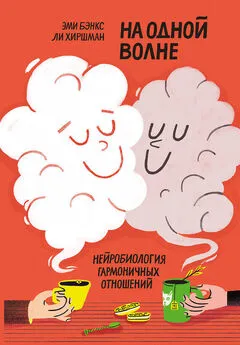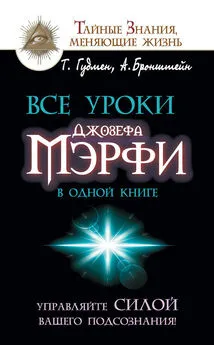Энни Макки - На одной волне: Как управлять эмоциональным климатом в коллективе
- Название:На одной волне: Как управлять эмоциональным климатом в коллективе
- Автор:
- Жанр:
- Издательство:Литагент Альпина
- Год:2015
- Город:Москва
- ISBN:978-5-9614-4164-2
- Рейтинг:
- Избранное:Добавить в избранное
-
Отзывы:
-
Ваша оценка:
Энни Макки - На одной волне: Как управлять эмоциональным климатом в коллективе краткое содержание
Книга адресована в первую очередь руководителям компаний и менеджерам любого уровня, преподавателям и студентам школ менеджмента, но будет интересна и широкой аудитории.
На одной волне: Как управлять эмоциональным климатом в коллективе - читать онлайн бесплатно полную версию (весь текст целиком)
Интервал:
Закладка:
189
Лидерство и зависимость: см. John P. Kotter, Power in Management: How to Understand, Acquire, and Use It (New York: AMACOM, 1979).
190
Эффективность лидерства и властные полномочия: см. David C. McClelland and Richard Boyatzis, “The Leadership Motive Pattern and Long Term Success in Management,” Journal of Applied Psychology 67 (1982): с. 737–743; Alan F. Fontana, Roberta L. Rosenberg, Jonathan L. Marcus, and Robert D. Kerns, “Type A Behavior Pattern, Inhibited Power Motivation, and Activity Inhibition,” Journal of Personality and Social Psychology 52 (1987): с. 177–183; McClelland, Human Motivation ; Ruth L. Jacobs and David McClelland, “Moving Up the Corporate Ladder: A Longitudinal Study of the Leadership Motive Pattern and Managerial Success in Women and Men,” Consulting Psychology Journal: Practice and Research 46 (1994): с. 32–41; Sharon R. Jenkins, “Need for Power and Women’s Careers Over 14 Years: Structural Power, Job Satisfaction, and Motive Change,” Journal of Personality and Social Psychology , 66 (1994): с. 155–165.
191
Управленческий стресс: см. McClelland, Human Motivation .
192
Факторы, способствующие стрессу: см. Sally S. Dickerson and Margaret E. Kemeny, “Acute Stressors and Cortisol Responses: A Theoretical Integration and Synthesis of Laboratory Research,” Psychological Bulletin 130, № 3 (2004): с. 355–391.
193
Ожидание стрессовых событий как фактор стресса: см. Paul Martin, The Healing Mind: The Vital Links Between Brain and Behavior, Immunity and Disease (New York: Thomas Dunne Books, St. Martin’s Griffin, 1997).
194
Роль самоконтроля в деятельности грамотных лидеров: см. McClelland and Boyatzis, “The Leadership Motive Pattern and Long Term Success in Management”; David McClelland, Power: The Inner Experience (New York: Irvington Press, 1975).
195
Самоконтроль вызывает стресс: см. Roy Baumeister, Todd Heatherton, and Diane Tice, Losing Control: How and Why People Fail at Self-Regulation (New York: Academic Press, 1994); Robert Sapolsky, “The Physiology and Pathophysiology of Unhappiness” в Well-Being: The Foundations of Hedonic Psychology , ed. Daniel Kahnemann, Edward Diener, and Norbert Schwarz (New York: Russell Sage Foundation, 1999), с. 453–469.
196
Аспекты управленческого стресса: см. Robert S. Steele, “The Physiological Concomitants of Psychogenic Motive Arousal in College Males” (PhD diss., Harvard University, 1973); Robert S. Steele, “Power Motivation, Activation, and Inspirational Speeches,” Journal of Personality 45 (1977): с. 53–64; McClelland, Human Motivation ; David McClelland and John B. Jemmott III, “Power Motivation, Stress, and Physical Illness,” Journal of Human Stress 6, № 4 (1980: с. 6–15; David McClelland, Grace Ross, and Vandana Patel, “The Effect of an Academic Examination on Salivary Norepinephrine and Immunoglobulin levels,” Journal of Human Stress 11 (1985): с. 52–59; David McClelland, Erik Floor, Richard J. Davidson, and Clifford Saron, “Stressed Power Motivation, Sympathetic Activation, Immune Function, and Illness,” Journal of Human Stress 67 (1980): с. 737–743; Oliver C. Schultheiss, “Psychophysiological and Health Correlates of Implicit Motives,” paper presented at the 107th Annual Convention of the American Psychological Association, Boston, Massachusetts, August 1999, Oliver C. Schultheiss and Joachim C. Brunstein, “Inhibited Power Motivation and Persuasive Communication: A Lens Model Analysis,” Journal of Personality 70 (2002): с. 553–582; Oliver C. Schultheiss and Wolfgang Rohde, “Implicit Power Motivation Predicts Men’s Testosterone Changes and Implicit Learning in a Context Situation,” Hormones and Behavior 41 (2002): с. 195–202; Joseph LeDoux, Synaptic Self: How Our Brains Become Who We Are (New York: Viking, 2002); Robert M. Sapolsky, “Why Stress Is Bad for Your Brain,” Science , August 9, 1996, с. 749–750; Bruce S. McEwen, “Protective and Damaging Effects of Stress Mediators,” New England Journal of Medicine 338 (1998): с. 171–179.
197
Стресс и активация СНС: см. W. Cannon, “Stresses and Strains in Homeostasis,” American Journal of Medical Science 189 (1935): с. 1–14.
198
Аллостатическая нагрузка и напряжение: см. Sally Dickerson and Margaret Kemeny, “Acute Stressors and Cortisol Responses”; Oakly Ray, “How the Mind Hurts and Heals the Body,” American Psychologists 59, № 1 (2004): с. 29–40; Suzanne C. Segerstom and Gregory E. Miller, “Psychological Stress and the Human Immune System: A Meta-analytic Study of 30 Years of Inquiry,” Psychological Bulletin 130, № 4 (2004): с. 601–630.
199
СНС и гипоталамо-гипофизо-надпочечная ось: см. Robert M. Sapolsky, Why Zebras Don’t Get Ulcers , 3rd edition (New York: Harper Collins, 2004); LeDoux, Synaptic Self .
200
Возбуждение СНС и артериальное давление: см. Sapolsky, Why Zebras Don’t Get Ulcers ; LeDoux, Synaptic Self ; V. DeQuattro and M. Feng, “The Sympathetic Nervous System: The Muse of Primary Hypertension,” Journal of Human Hypertension 16 (2002): с. S64–S69.
201
Возбуждение СНС и кровоток: см. Sapolsky, Why Zebras Don’t Get Ulcers .
202
Возбуждение СНС и активность левой префронтальной области мозга: LeDoux, Synaptic Self ; J. Davidson, Daren C. Jackson, and Ned H. Kalin, “Emotion, Plasticity, Context and Regulation: Perspectives from Affective Neuroscience,” Psychological Bulletin 126 (2000): с. 890–909; Richard J. Davidson, личное сообщение, 2003.
203
Кортизол и иммунная система: см. McEwen, “Protective and Damaging Effects of Stress Mediators”; Clifford Saper, “The Central Autonomic Nervous System: Conscious Visceral Perception and Autonomic Pattern Generation,” Annual Review of Neuroscience 25 (2002): с. 433–439; Melissa A. Rosenkranz, Daren C. Jackson, Kim M. Dalton, Isa Dolski, Carol D. Ryff, Burt H. Singer, Daniel Muller, Ned H. Kalin, and Richard J. Davidson, “Affective Style And In Vivo Immune Response: Neurobehavioral Mechanisms,” Proceedings of the National Academy of Science , 100 (2003): с. 11148–11152.
204
Влияние кортизола на нейрогенез и явление «переутомления» нервных клеток: см. Bruce McEwen, “Protective and Damaging Effects of Stress Mediators”; Sapolsky, Why Zebras Don’t Get Ulcers ; LeDoux, Synaptic Self ; Sapolsky, “Why Stress Is Bad for Your Brain”; James E. Zull, The Art of Changing the Brain: Enriching Teaching by Exploring the Biology of Learning (Sterling, VA: Stylus, 2002); Peter S. Erikson. Ekaterina Perfilieva, Thomas Bjork-Eriksson, Ann-Marie Alborn, Claes Nordburg, Daniel A. Peterson, and Fred H. Gage, “Neurogenesis in the Adult Human hippocampus,” Nature Medicine 4 (1998): с. 1313–1317; Richard J. Davidson, личное сообщение, 2003.
205
Возбуждение СНС и активация правой префронтальной области мозга: см. Richard J. Davidson, Paul Ekman, Clifford D. Saron, Joseph A. Senulis, and Wallace V. Friesen, “Approach-Withdrawal and Cerebral Asymmetry: Emotional Expression and Brain Physiology I,” Journal of Personality and Social Psychology 58, № 2 (1990): с. 330–341.
206
Нейронная активность и чувство подавленности: См. Andrew J. Tomarken, Richard J. Davidson, Robert E. Wheeler, and Robert C. Doss, “Individual Differences in Anterior Brain Asymmetry and Fundamental Dimensions of Emotion,” Journal of Personality and Social Psychology , 62, № 4 (1992): с. 676–687.
207
Иммунодепрессивное воздействие секреции кортизола: см. Sally Dickerson and Margaret Kemeny, “Acute Stressors and Cortisol Responses”; Segerstom and Miller, “Psychological Stress and the Human Immune System”; Nikolai Petrovsky, “Towards a Unified Model of Neuroendocrine-Immune Interaction,” Immunology and Cell Biology 79 (2001): с. 350–357; Gregory E. Miller, Sheldon Cohen, Sarah Pressman, Anita Barkin, Bruce S. Rabin, and John J. Treanor, “Psychological Stress and Antibody Response to Influenza Vaccination: When Is the Critical Period for Stress, and How Does It Get Inside the Body?” Psychosomatic Medicine 66, № 2 (2004): с. 215–223.
208
Власть, самоконтроль и иммуноглобулин: см. David McClelland and Richard Boyatzis, “Leadership Motive Pattern and Long Term Success in Management,” Journal of Applied Psychology 67, № 9 (1982): с. 737–743; David C. McClelland, S. E. Locke, R. M. Williams, and M. W. Hurst, “Power Motivation, Distress and Immune Function” (unpublished manuscript, Harvard University, 1982).
209
Хронический стресс и иммунные заболевания: там же.
210
Возбуждение СНС и восприимчивость к заболеваниям: Richard Davidson, личное сообщение, 2003; Sapolsky, Why Zebras Don’t Get Ulcers ; McEwen, “Protective and Damaging Effects of Stress Mediators.”
211
Возбуждение СНС и сердечные заболевания: см. DeQuattro and Feng, “The Sympathetic Nervous System.”
212
Роль ПСНС: см. Sapolsky, Why Zebras Don’t Get Ulcers ; McEwen, “Protective and Damaging Effects of Stress Mediators.”
213
Восстановление и выздоровление как результат активации ПСНС: там же.
214
Хронический стресс, нарушения сна и другие расстройства: см. Sapolsky, Why Zebras Don’t Get Ulcers .
215
Хронический стресс и снижение творческих способностей: см. McEwen, “Protective and Damaging Effects of Stress Mediators.”
216
Отличия в реакции женского организма на стресс: см. Shelly E. Taylor, Laura C. Klein, Brian P. Lewis, Tara L. Gruenewald, Regan A. R. Gurung, and John A. Updegraff, “Biobehavioral Responses to Stress in Females: Tend or Befriend, Not Fight or Flight,” Psychological Review 107 (2002): с. 411–429.
Читать дальшеИнтервал:
Закладка:




![Андрей Нуждин - На одной волне [СИ]](/books/1081413/andrej-nuzhdin-na-odnoj-volne-si.webp)


![Андрей Нуждин - Зона Питер. На одной волне [litres]](/books/1144743/andrej-nuzhdin-zona-piter-na-odnoj-volne-litres.webp)


